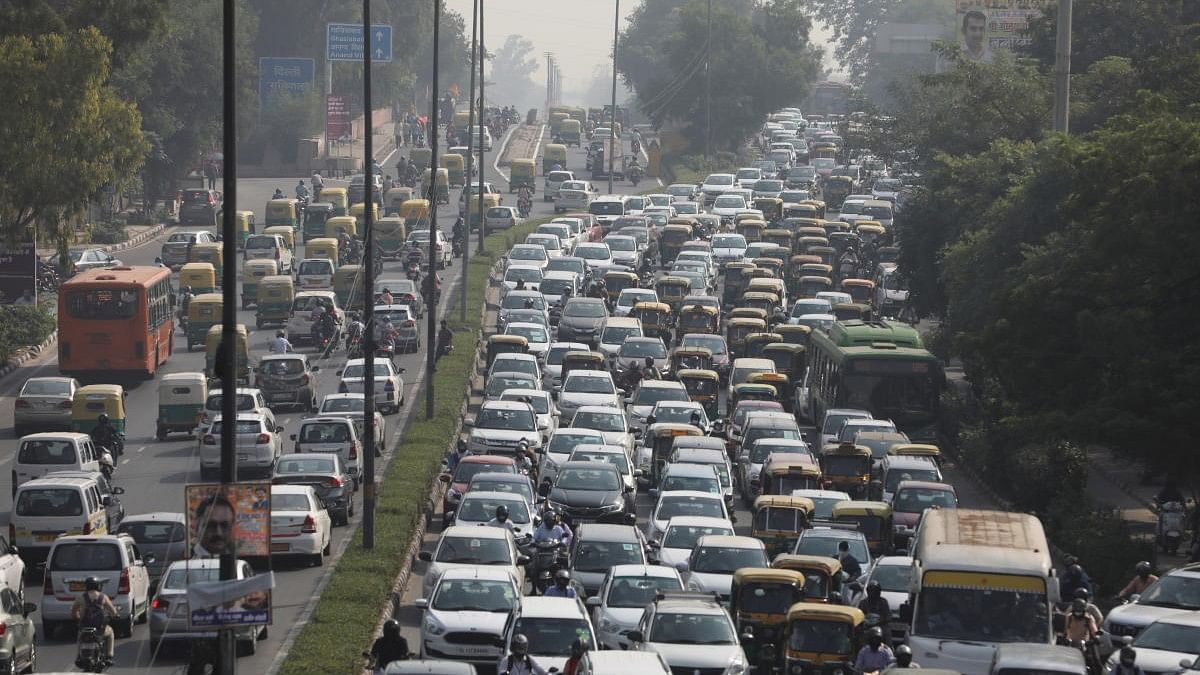
Vehicles queue at a traffic light amid pollution in New Delhi. (Representative image)
Credit: Reuters File Photo
New Delhi: With a toxic haze enveloping Delhi national capital region, environmentalists on Wednesday appealed to the governments to take urgent steps to reduce the four-wheeler load on the road as vehicular emission has been found to be the major contributor behind the surge in winter pollution.
While stubble burning in Punjab and Haryana and Diwali firecrackers do trigger an upward spike in Delhi NCR’s air pollution level, a very high baseline pollution caused by an explosive growth in vehicle population lies at the core of the recurring health problems and breathing difficulties faced by people in every Oct – Nov.
“In the winter the transport sector becomes the top contributor for air pollution in Delhi. We should consider celebrating a no car Diwali season,” said Sunita Narain, director general, Centre for Science and Environment, a Delhi-based think tank.
A CSE analysis shows that nearly one-third of Delhi’s winter pollution comes from local sources with more than 50 per cent contribution from the transport sector.
The remaining two-third is contributed by other NCR cities like Noida, Greater Noida, Gurgaon, Faridabad and Ghaziabad; and districts outside the NCR like those in Punjab and Haryana where farmers put fields on fire to get rid of the paddy stubble.
According to the official data, Delhi has over 75 lakh vehicles and 6.5 lakh vehicles were registered in 2023-24. In addition, 11 lakh vehicles enter and exit Delhi daily.
“Due to an over-dependence on personal vehicles, there is heavy congestion on the roads, hurting people economically” said Anumita Roychowdhury, CSE executive director, noting that an IIT Madras study showed that by 2025, the cost of congestion in Delhi will be $ 12,003 million, and by 2030, $14,658 million.
The CSE analysis shows that current policies don’t favour operating a bus network even though bus ridership has gone down for long waiting times at bus stops.
Delhi has not yet met the 1998 Supreme Court directive for 10,000 buses and as of July, 2024, only 7,683 buses are in place. This includes over 1,000 buses that do not ply on the roads because of breakdown.
“While meeting clean air benchmarks requires deep cuts in emissions from all key sources of pollution, the mobility crisis will require immediate attention. It cannot hide behind the smokescreen of pollution from farms and other sources,” Narain said.
